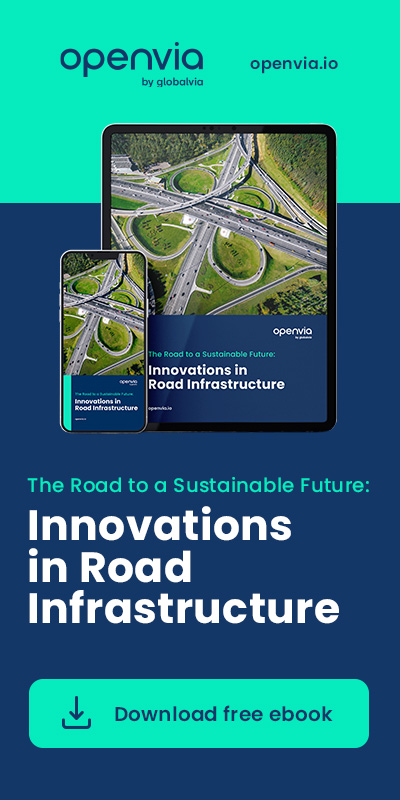Discovering the Benefits of Mobility as a Service
Mobility is an essential aspect of daily life. Whether commuting to work or traveling for leisure or for other needs, our ability to move efficiently from one place to another profoundly impacts our productivity, well-being, and environmental footprint. However, traditional transportation systems are riddled with challenges.
Urban areas grapple with traffic congestion, which not only wastes time but also increases stress levels. Public transport systems, while essential, often lack the flexibility and integration needed to meet the dynamic demands of modern users. Additionally, the environmental toll of individual car ownership, including air pollution and carbon emissions, is no longer sustainable in the face of the climate crisis.
Enter Mobility as a Service (MaaS)—a groundbreaking concept that has the potential to revolutionize how we move. By integrating various transportation modes into a seamless, user-centric service, MaaS offers a vision for more efficient, sustainable, and accessible mobility. But what exactly is MaaS, and how can it address the shortcomings of current transportation systems?
What is Mobility as a Service?
Mobility as a Service (MaaS) is an innovative model that redefines transportation by integrating multiple transport options—public buses, trains, ride-sharing, bike-sharing, and more—into a single platform accessible through a smartphone app or digital interface. Instead of navigating fragmented services or juggling multiple payment methods, users can plan, book, and pay for an end-to-end journey using one unified system.
MaaS is not just a technological evolution; it’s a paradigm shift. It moves away from the traditional model of vehicle ownership and towards a shared, on-demand transportation ecosystem. By leveraging technology like artificial intelligence (AI), machine learning, and geolocation, MaaS creates a personalized, efficient, and flexible mobility experience for users.
The Benefits of MaaS
The potential of Mobility as a Service to transform transportation systems and urban life is immense. Below are some of the key benefits it offers:
1. Reduced Traffic Congestion
One of the most pressing issues in urban mobility is traffic congestion. By promoting shared transportation options and optimizing routes, MaaS can significantly reduce the number of vehicles on the road. A well-integrated MaaS system encourages users to rely on public transit, carpooling, or micro-mobility solutions like scooters, easing the strain on roads and reducing travel delays.
2. Lower Environmental Impact
Fewer cars on the road mean lower carbon emissions. MaaS promotes sustainable transportation by prioritizing eco-friendly options such as public transport, cycling, and electric vehicles, including drones in the not too distant future. Many MaaS platforms integrate carbon footprint calculators, allowing users to make informed, environmentally conscious choices. By shifting away from the dominance of private cars, MaaS contributes to cleaner air and helps combat climate change.
3. Enhanced Transportation Efficiency
Traditional transportation networks often suffer from inefficiencies, such as underused buses or overcrowded trains. MaaS uses real-time data and predictive algorithms to optimize routes, even taking into account potential incidents and accidents on the road, and match supply with demand. This ensures that resources are utilized effectively, reducing waste and improving reliability for passengers.
4. Improved Accessibility
MaaS makes transportation more accessible to everyone, including individuals with limited mobility, those in underserved areas, or people without access to a private vehicle. By integrating diverse transportation options, including paratransit services and on-demand shuttles, MaaS seeks to ensure that mobility is inclusive.
5. Better User Experience
At its core, MaaS prioritizes the user. By providing a single interface for planning, booking, and payment, it simplifies the complexities of modern travel. Personalization features, such as suggested routes based on travel history or preferences of users, enhance convenience. MaaS also allows users to track their journeys in real-time, ensuring transparency and reducing he worry of not arriving on time.
6. Cost Savings for Users
Owning and maintaining a private vehicle can be expensive, particularly in urban areas where parking costs are high. MaaS offers a cost-effective alternative, allowing users to pay only for the transportation they need. Subscription models, such as monthly plans that cover unlimited travel across different modes, provide predictability and savings.
The Technology Behind MaaS
The seamless experience offered by MaaS is made possible by advanced digital platforms that connect users with transportation providers. These platforms utilize a combination of cutting-edge technologies:
1. Artificial Intelligence (AI) and Machine Learning (ML)
AI enables MaaS platforms to analyze vast amounts of data, predict user behavior, and optimize transportation networks. For example, machine learning algorithms can forecast peak travel times, suggest alternative routes during disruptions, or dynamically price services to manage demand.
2. Geolocation and Real-Time Data
Accurate location tracking is essential for MaaS. Geolocation technology allows users to see available transport options nearby, track the arrival of a bus or train, and receive real-time updates about delays. By integrating real-time data from multiple providers, MaaS ensures that users are always informed.
3. Integration of Payment Systems
A cornerstone of MaaS is its ability to unify payment across different transport modes. Users can pay for their journeys through a single app, eliminating the need for multiple tickets or accounts. Some platforms even offer subscription plans or dynamic pricing based on usage patterns.
4. Data Security and Privacy
As MaaS platforms collect vast amounts of personal and travel data, robust security measures are critical. Encryption and secure authentication ensure that user information remains protected. Additionally, anonymized data can be used to improve services without compromising privacy.
MaaS: A Vision for the Future
The adoption of Mobility as a Service represents a shift towards a more sustainable, efficient, and user-centric transportation model. Governments and private companies worldwide are recognizing its potential, investing in infrastructure, and fostering partnerships to create MaaS ecosystems.
For individuals, MaaS offers unparalleled convenience and flexibility. Imagine planning a trip from your doorstep to a distant destination using just one app—combining a bike ride, a train journey, and a car-share service seamlessly. For cities, MaaS offers solutions to pressing urban challenges, from congestion to pollution.
As the technology and infrastructure supporting MaaS continue to evolve, its potential to reshape mobility becomes even greater. By prioritizing accessibility, efficiency, and sustainability, MaaS is not just a service—it’s the future of transportation.In conclusion, Mobility as a Service is more than a buzzword; it’s a transformative approach to how we move. By embracing Mobility as a Service, we can address some of the most significant challenges in mobility today. We can create a smarter, greener, and more inclusive transportation systems for the future.






